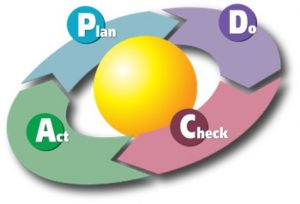What we do at EGM (MPC) to Ensure Quality Products
What is Quality?
- In the production industry, quality is a measure of excellence or a state of being free from defects, deficiencies and significant variations.
- It is brought about by strict and consistent commitment to certain standards that achieve uniformity of a product in order to satisfy specific customer or user requirements
Quality Management is based on The Deming Cycle
PDCA: Plan – Do – Check – Act/Adjust
This is a four-step management method used in business for the control and continuous improvement of processes and products.


